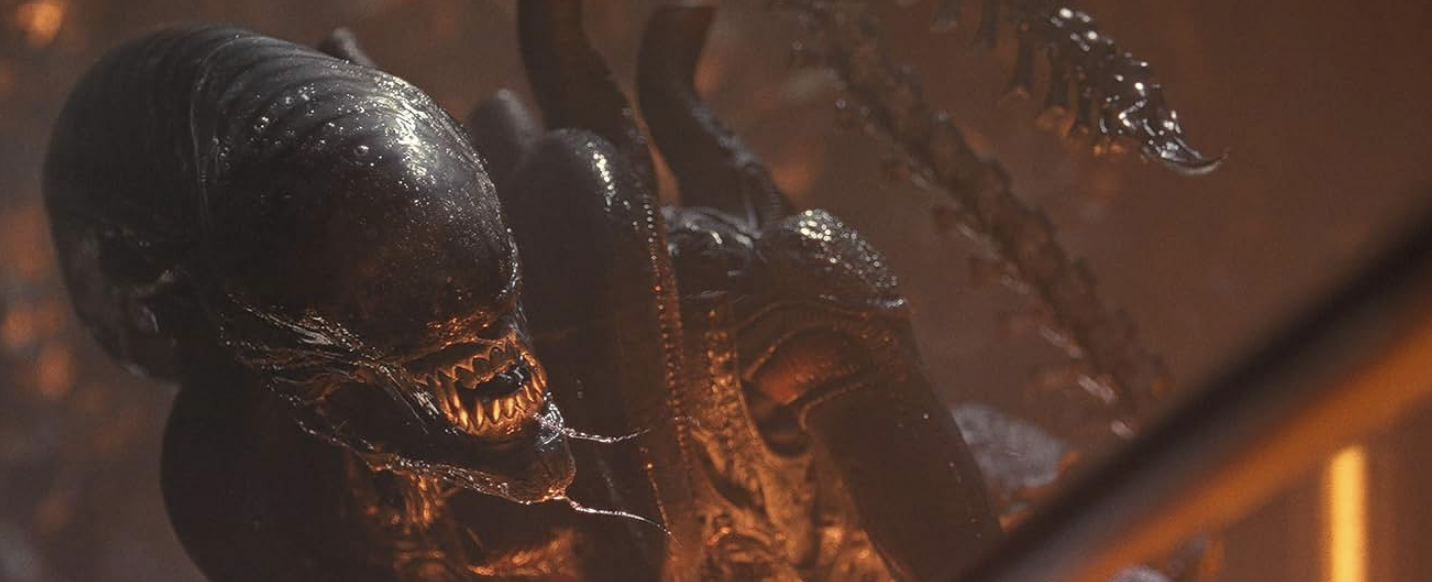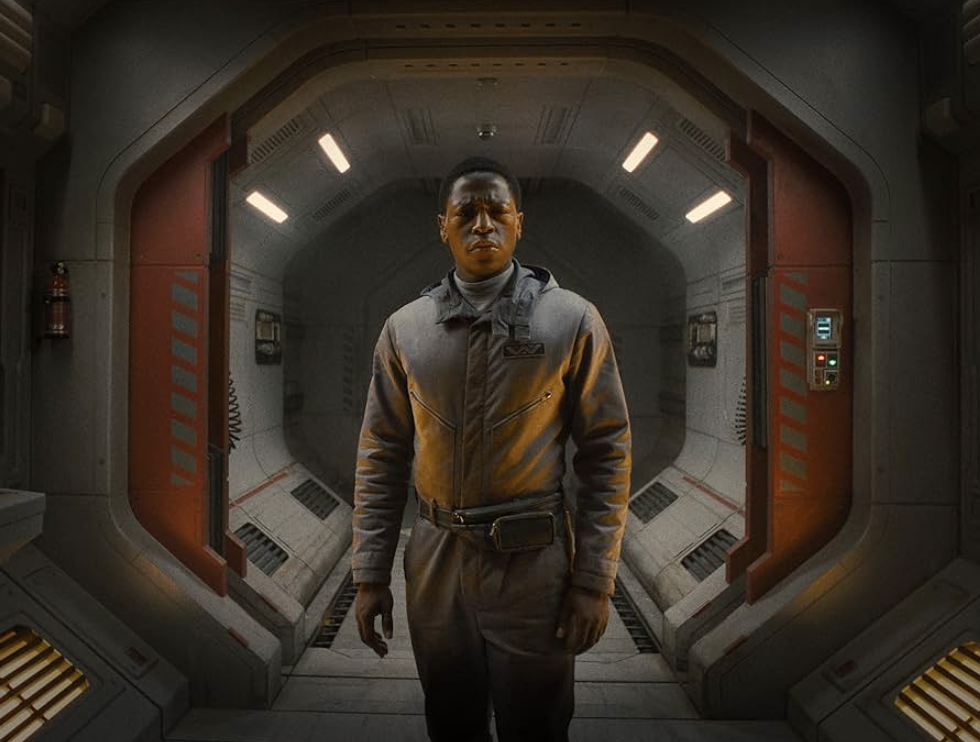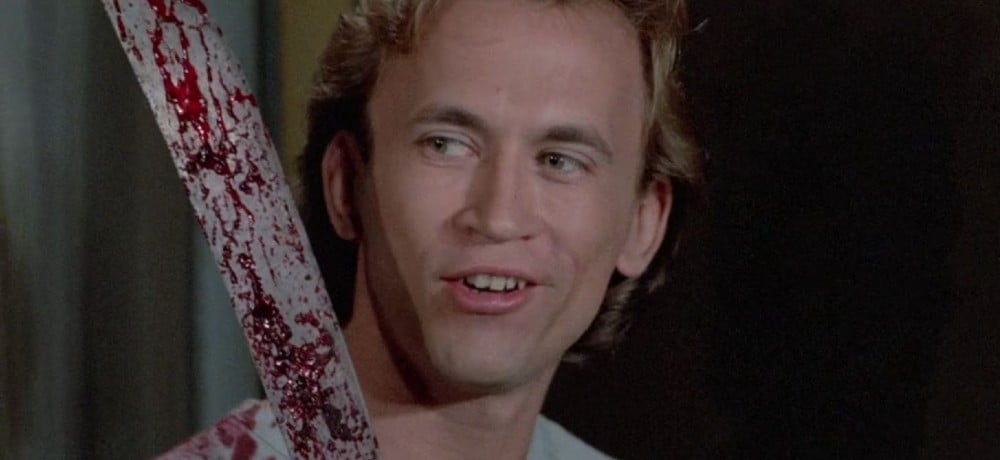Romulus’ is Peak Pregnancy Horror


Editor’s Note: The following contains spoilers for Alien (1979), Prometheus (2012), and Alien: Romulus (2024).
2024 will likely come to be known as the year of pregnancy horror. With Immaculate and The First Omen both releasing in early spring, there’s something in the zeitgeist encouraging us to discuss the darker side of human procreation. Contributing to (and arguably causing) this trend is the 2022 overturn of Roe v. Wade which stripped US citizens of reproductive freedom and made health care subject to the whims and religious ideology of state governments and local politicians. Since then, people who can get pregnant have been vocal about horror stories involving miscarriages, rape, and other medical trauma while lamenting the loss of bodily autonomy and access to lifesaving procedures. In other words, it’s the perfect time for another Alien movie.
No franchise in horror history has matched Ridley Scott’s epic sci-fi saga in revealing the hidden horrors of human reproduction. Director Fede Alvarez delivers peak pregnancy horror with his latest franchise installment Alien: Romulus, a disturbing exploration of horrific gestation and the most violent depiction of forced impregnation in mainstream horror history.
The Original Alien And Male Birth
Scott’s franchise has always been on the cutting edge of this progressive subgenre. The visionary Alien (1979) follows the crew of the Nostromo as they fall one by one to a parasitic monster that uses the human body as an incubator before leaving the bloody remains for dead. While exploring a rogue distress call, Kane (John Hurt) stumbles upon a large egg containing a spider-like creature that attaches itself to his face. When the beast mysteriously retracts and dies, Kane returns to the crew seemingly healthy, only to have a tiny fanged monster burst out of his chest.
This magnificent scene is not only one of the most shocking in cinematic history, but a fascinating depiction of male rape. Kane is forcibly penetrated by a phallic appendage and implanted with an embryo without his consent. Unwittingly made to carry the child to term, he delivers a baby monster in a harrowing birth sequence that ultimately takes his life. Released more than a decade before marital rape became a nationwide crime, this landmark scene allowed male audience members to empathize with the experience of sexual assault and forced birth.
Prometheus And An Extraterrestrial C-Section
Though each subsequent film includes transgressive explorations of gestational violence, one scene features a different kind of hellish birth. Scott’s 2012 film Prometheus takes place decades before the events of Alien and follows a scientific crew exploring a distant moon. Dr. Elizabeth Shaw (Noomi Rapace) has just returned from a disastrous mission when an exam reveals she is pregnant —despite being sterile and having just awoken from cryosleep. She immediately panics and begs David (Michael Fassbender), the ship’s synthetic, to perform an abortion, but the nefarious android feigns helplessness and insists they do not have the personnel for the procedure.
Facing certain death at the culmination of this pregnancy, Dr. Shaw escapes quarantine and runs to a MedPod to perform an abortion. Though the machine is only calibrated for male anatomy (a frustrating parallel to Western medicine), she programs an abdominal surgery and watches as the machine slices open her belly to remove a tentacled monster. This harrowing operation reveals the grisly nature of cesarean birth along with the helpless terror of being trapped in a body with an unwanted—and deadly—fetus.

Enter Alien: Romulus
Set between the first and second franchise installments, Alien: Romulus follows a group of young miners hoping to escape a colony plagued by endless night. Rain (Cailee Spaeny) and her synthetic brother Andy (David Jonsson) reunite with friends who are planning to raid a decommissioned Weyland-Yutani ship that once served as a research center for the alien species. While searching for fuel, they enter an abandoned lab and are swarmed by dozens of reanimated facehuggers.
Despite a hasty retreat, Navarro (Aileen Wu) falls victim to one of the creatures and writhes in pain as it forces a proboscis into her mouth and throat. Finally able to pry it off, the crew watches as an impossibly long, fleshy organ slides out of her throat. Alvarez gives us a clear view of this disturbing anatomy when one of the creatures slams itself against a glass door. With its phallic appendage dangling from a vaginal opening, we cannot deny the explicit connection to rape and sexualized violence.
Deadly Gestation
Navarro begins to feel the creature moving inside her almost immediately. Holding an x-ray torch to her upper back, she sees a tiny chestburster throwing itself against the inside of her ribcage. She screams in horror as the baby xenomorph begins to rip its way out of her body. Similar to vaginal birth, the chestburster needs several pushes to emerge from its makeshift birth canal. Reminiscent of a baby crowning, its head peers out of the crude opening before sliding through a gaping wound and bearing its teeth. By positioning this birth near Navarro’s breast, Alvarez maintains focus on the female reproductive system while allowing us to fully perceive the often violent and bloody experience of vaginal birth.
Scott’s original chestburster takes several hours to develop inside Kane’s body, but Navarro’s deadly gestation is much more rapid. Though likely due to the damaged facehugger, this shortened timeline helps connect her death to the initial rape. The phallic organ may have retracted, but a piece of the monster remains to wreak havoc on her body, extending the rape through to the inevitable birth. Similarly, when a woman becomes impregnated by rape, the crime does not last minutes or hours, but for the nine months it will take to grow and birth the fetus still invades her body. By forcing that woman to carry the child to term, elected officials and everyone supporting draconian abortion bans become complicit in her sexual assault and extended victimization. With this visceral scene, Alvarez displays the brutal consequences of these cruel policies.
This upsetting birth may kick off the horror, but Alien: Romulus is filled with vaginal imagery. A subsequent scene encapsulates Alvarez’s themes of sexualized violence while providing more information about the xenomorph’s development. With the chestburster now loose on the ship, Bjorn (Spike Fearn) notices a pulsing cocoon attached to the inner wall. Hoping to destroy the creature at a vulnerable moment, he inserts a long, cylindrical weapon into a vagina-like opening and administers a series of electrical shocks to the tender flesh inside. A clear parallel to rape, the xenomorph retaliates by shooting acidic blood back at Bjorn which immediately begins to melt into his body. These two scenes set the tone for a violent film in which female bodies are treated as incubators then discarded, a disturbing vision of the life conservative ideologues hope to create.

Human Pregnancy In Alien: Romulus
After joining the ranks of this ill-fated mission, Rain learns that her friend Kay (Isabela Merced) is in the first trimester of her own pregnancy. Despite Rain’s sympathetic response, we don’t learn much about Kay’s own feelings toward her delicate condition. She withholds the father’s identity and does not discuss the pregnancy with anyone else. She worries about her impending arrival and seems to view it as a fearsome burden that will further complicate her already difficult life.
When a xenomorph attack leaves Kay mortally wounded, Andy offers an experimental serum that will infuse her body with alien DNA, theoretically allowing her to rapidly heal. Rain immediately rejects the unknown treatment, but we later watch the badly injured woman inject herself in private. It’s notable that we do not hear Kay’s reasoning for taking the dangerous drug and it’s likely her motives are reminiscent of Dr. Shaw’s own frantic medical intervention. Perhaps she takes a chance on the serum to save her own life rather than to protect the fetus growing inside her.
Those assuming Kay simply wants to save her baby fall into a common trap that has plagued women for centuries. We assume that the moment a woman learns she is pregnant, she will instinctively view her own life as subservient to the cells growing in her womb and willingly sacrifice herself for their survival. But Kay never espouses any of these beliefs. When Andy refuses to rescue her from a lurking xenomorph, it’s Rain who tells him she is pregnant, not Kay. The frightened woman simply wants to live and does not disclose her pregnancy when pleading for help.
Valuing Alien Life Over Human
When we assume that a woman will automatically value a fetus over her own life, it becomes that much easier for society to do the same. Laws that protect the unborn at the expense of a living mother suddenly seem more reasonable. But Kay never mentions her own pregnancy. It is merely one piece of her current physical status rather than an all-consuming personality trait.
This harmful idea takes human form after Andy receives an upgrade thanks to a damaged synthetic in the abandoned lab. Ostensibly protecting Rain, he sacrifices Kay to keep the fully grown xenomorph trapped on the other side of a transparent door. This cold calculation is foreshadowed earlier in the film when we learn about Bjorn’s mother and her tragic fate. In the wake of a mine malfunction, a different synthetic opted to trap her behind impenetrable doors while allowing a larger group to escape. It’s not a coincidence that both decisions are made by inhuman machines programmed to view a woman’s life as expendable.
When Andy’s system merges with corporate software, his prime directive becomes even colder. He is now tasked with protecting the interests of Weyland-Yutani at all costs and prioritizing vials of embryonic fluid over human life. This horrific order directly parallels a political system that values implanted eggs over the flesh and blood of humans who house them and a medical system that allows lawyers to decide when and if doctors can provide lifesaving care. Alvarez shines a light on these real-life horrors by presenting two more women sacrificed on the altar of capitalistic greed.

The Hellish Offspring of Alien: Romulus
In a trademark coda, Rain defeats the xenomorphs and makes it back to the ship mostly unscathed. She tucks Kay into the stolen cryogenic chamber and promises that she will wake up in a safer place. But moments later, we see the deadly results of this unknown serum. Kay’s first-trimester belly has grown to full gestational size and she has been thrust into active labor. The frightened young woman screams in pain as the rapidly expanding baby pushes its way out of her body, ripping and tearing any flesh blocking its path. Kay gives birth vaginally, but what emerges from her womb shares little resemblance to a human baby. Rain severs the umbilical cord with her bare hands then hunts down a nightmarish alien/human hybrid peering out of an acidic placenta.
Just moments after its birth, the creature has grown to an enormous size. Emerging from the shadows, it approaches its mother wagging an outstretched tongue capped by a second mouth filled with jagged teeth. Alvarez refrains from showing us a hideous nursing session, but it’s likely the offspring has fixed its sharp jaws to Kay’s bare breast; a hungry baby searching for milk. Many new mothers are surprised at the pain involved in nursing an infant. While the let-down reflex and subsequent milk flow can be pleasurable and even euphoric, breastfeeding can also cause a great deal of fear, frustration, and physical pain. It’s common to feel as if you’re being sucked dry by a tiny newborn who is constantly hungry. The image of Kay withering under her offspring’s demanding jaws likely validates a fear many new mothers are afraid to express.
The Reality of Childbirth
These harrowing sequences highlight an uncomfortable truth we’ve been conditioned to ignore: human reproduction is often painful and unpleasant. Women are expected to devote themselves to cells that grow in our bodies regardless of circumstance and are shamed when we don’t place the fetus’s survival above our own. But the obligation to love the contents of our womb is a societal construct and a tool to keep women subservient in a patriarchal world. We love our children because we choose to do so, not because we have to. While pregnancy can be a joyful transformation, millions of women view an implanted egg as an invading monster that will inevitably lead to excruciating pain. Alien: Romulus validates this unique experience by pushing depictions of human procreation to their outer limits and exposing the brutal nature of creating life.

With the offending chip removed from his system, Andy reverts to a more compassionate persona and regains the directive to protect Rain above all else. Alien: Romulus ends not with a woman saving a man or vice versa, but with a brother and sister saving each other. Rain gives Andy a new directive: to do what’s best for both of them, establishing a partnership that charges men and women with equal responsibility for bodily autonomy.
Though people who can get pregnant should be at the forefront of the fight for reproductive rights, we cannot exclude men from the conversation. They are important allies in our quest for access to reproductive healthcare and describing the fight as a woman’s issue is just as dehumanizing as assuming all women want to be mothers. Through this conclusion, Alvarez posits that regardless of gender identity, we cannot move forward as a species by leaving half of the population behind. The right to reproductive freedom does not solely affect women and only a united front will deliver the US out of this abortion ban nightmare.
Categorized:Editorials





